Winter in Beckley, West Virginia, often means cozy evenings by the fire, but it can also bring a sharp increase in household electricity costs, especially as temperatures plummet. The U.S. Energy Information Administration (EIA) reports that Americans spend over $1,000 annually on electricity for heating alone, not to mention the increased use of lighting, appliances, and electronics during the colder months. With inflation and economic pressures adding to the burden, the prospect of higher electricity bills is a valid concern for many families. The good news is that you don’t have to sacrifice comfort to keep costs manageable. By implementing these effective strategies, you can minimize energy use and maintain a cozy home without breaking the bank.
1. Schedule a Home Energy Audit
A home energy audit is like a detective investigation for your house that reveals exactly where precious energy is escaping and how to optimize efficiency. During this professional assessment, experts meticulously examine your home, and they will use specialized equipment like infrared cameras, blower doors, and leak detectors. They pinpoint gaps in insulation, drafty windows, and energy waste in major systems like heating, lighting, and appliances. Think of it as a personalized roadmap to energy savings, with recommendations tailored to your household’s unique needs. The auditor may suggest solutions like sealing air leaks, installing smart power strips, or upgrading to more energy-efficient appliances, all of which can lead to significant savings over time. Scheduling an energy audit is an investment that pays dividends with lower electricity bills year-round.
2. Install a Programmable Thermostat
Take control of your energy consumption with a programmable thermostat. Instead of manually adjusting the thermostat throughout the day, program it to automatically lower the temperature during periods when you’re away or asleep. Imagine waking up to a warm house without wasting energy all night. The U.S. Department of Energy states that reducing your thermostat by 7 to 10 degrees Fahrenheit for at least eight hours daily can lower your heating costs by as much as 10%.
3. Install LED Lights
Switching to LED lighting is a simple yet powerful way to illuminate your home while slashing energy consumption. LED (light-emitting diode) bulbs use up to 75% less energy than traditional incandescent bulbs and boast a significantly longer lifespan. They produce minimal heat, and this makes them safer and more efficient. The energy savings from LED bulbs can be substantial, especially during the winter months when daylight hours are shorter, and we rely more on artificial lighting.
4. Adjust Your Water Heater’s Temperature
Water heating is a silent energy guzzler, which accounts for approximately 18% of a household’s total energy consumption. Most water heaters are set to a default temperature of 140°F, but the U.S. Environmental Protection Agency recommends lowering it to 120°F. This simple adjustment reduces energy use while still providing ample hot water for all your household needs. Lowering the temperature also minimizes the risk of scalding, enhancing safety for you and your family. Consider adding insulation to your water heater or upgrading to a tankless model for even greater energy efficiency.
5. Check and Replace HVAC Filters
Maintaining your HVAC system is essential for optimal performance and energy efficiency. A dirty air filter is like a clogged artery for your HVAC system, as it restricts airflow and forces it to work harder to heat your home. This overexertion leads to higher electricity usage and can even shorten the lifespan of your system. Experts recommend checking and replacing HVAC filters every three months, or more frequently if you have pets or allergies. Clean filters allow your HVAC system to operate at peak efficiency, and this results in lower energy consumption and a longer lifespan for your system.
6. Seal Any Air Leaks
Air leaks around doors, windows, and other openings are notorious energy thieves, as they allow precious heat to escape and cold air to infiltrate your home. The Department of Energy reports that windows alone can account for approximately 30% of a household’s heat loss. Sealing these gaps is a cost-effective way to improve energy efficiency because it prevents drafts and reduces the workload on your heating system. Weatherstripping, caulking, and door sweeps are simple yet effective tools for sealing leaks and keeping your home cozy and warm. Taking these measures can significantly reduce the amount of electricity your heating system needs to maintain a comfortable temperature.
7. Monitor Energy Usage for Electronics
Electronics, such as computers, televisions, and kitchen appliances, contribute significantly to household electricity consumption, especially during winter when families spend more time indoors. Even when turned off, these devices can continue to draw power, a phenomenon known as “phantom loads.” The Department of Energy estimates that 75% of the electricity used by home electronics occurs when they are in standby mode. To combat this energy drain, unplug devices when not in use or utilize power strips with an off switch to completely cut the power supply. Consider using energy-saving modes or smart plugs to further reduce energy consumption and keep your electricity bills in check.
8. Take Advantage of Natural Heating
Harnessing the power of the sun is a natural and effective way to reduce your reliance on your heating system. On sunny winter days, open curtains and blinds to allow sunlight to stream in and naturally warm your home. Conversely, close curtains and blinds at night to prevent heat loss through windows. Installing thermal-insulated curtains can further enhance your home’s insulation and keep those chilly drafts at bay. Additionally, running ceiling fans in reverse can help distribute warm air more evenly throughout a room.
9. Make the Most of Smart Upgrades
When upgrading your home, prioritize energy-efficient options that contribute to long-term savings. Motion sensors on lighting systems ensure that lights are only on when needed. Dimmer switches offer greater control over brightness levels, as they allow you to customize the ambiance while reducing energy consumption. When replacing large appliances, look for products with the ENERGY STAR label, a symbol of superior energy efficiency. ENERGY STAR-certified appliances meet strict guidelines and can lead to significant savings. According to the Environmental Protection Agency, households that use ENERGY STAR appliances can save up to $450 annually.
10. Schedule Electrical System Maintenance
Regular maintenance of your electrical system is like a tune-up for your household’s energy efficiency. A professional electrician can inspect your electrical panel, wiring, and major appliances to identify and correcting any issues before they escalate into costly problems. Scheduling regular maintenance for electric heating systems, such as electric furnaces, ensures they operate at peak efficiency. This can include cleaning filters, lubricating moving parts, and making minor repairs to keep everything running smoothly. Some service providers offer maintenance plans that provide peace of mind and ensure your system receives the care it needs throughout the year.
Contact Us Today
Winter in Beckley, WV, often brings the challenge of higher electricity bills, but with proactive planning and energy-saving strategies, you can minimize the impact on your wallet and stay warm and comfortable throughout the season. At Childers Air Plumbing & Electric, we’re passionate about helping homeowners in Beckley and the surrounding areas improve energy efficiency and create more sustainable homes. From comprehensive home energy audits to the installation of smart appliances, lighting, and surge protectors, our team is dedicated to helping you reduce wasted energy and enhance your household’s comfort. We also provide expert maintenance for electric heating systems to make certain that your furnace runs smoothly all winter long. Reach out to us today for electrical services and to learn more about how you can save on your winter electricity bills and create a more energy-efficient home.

